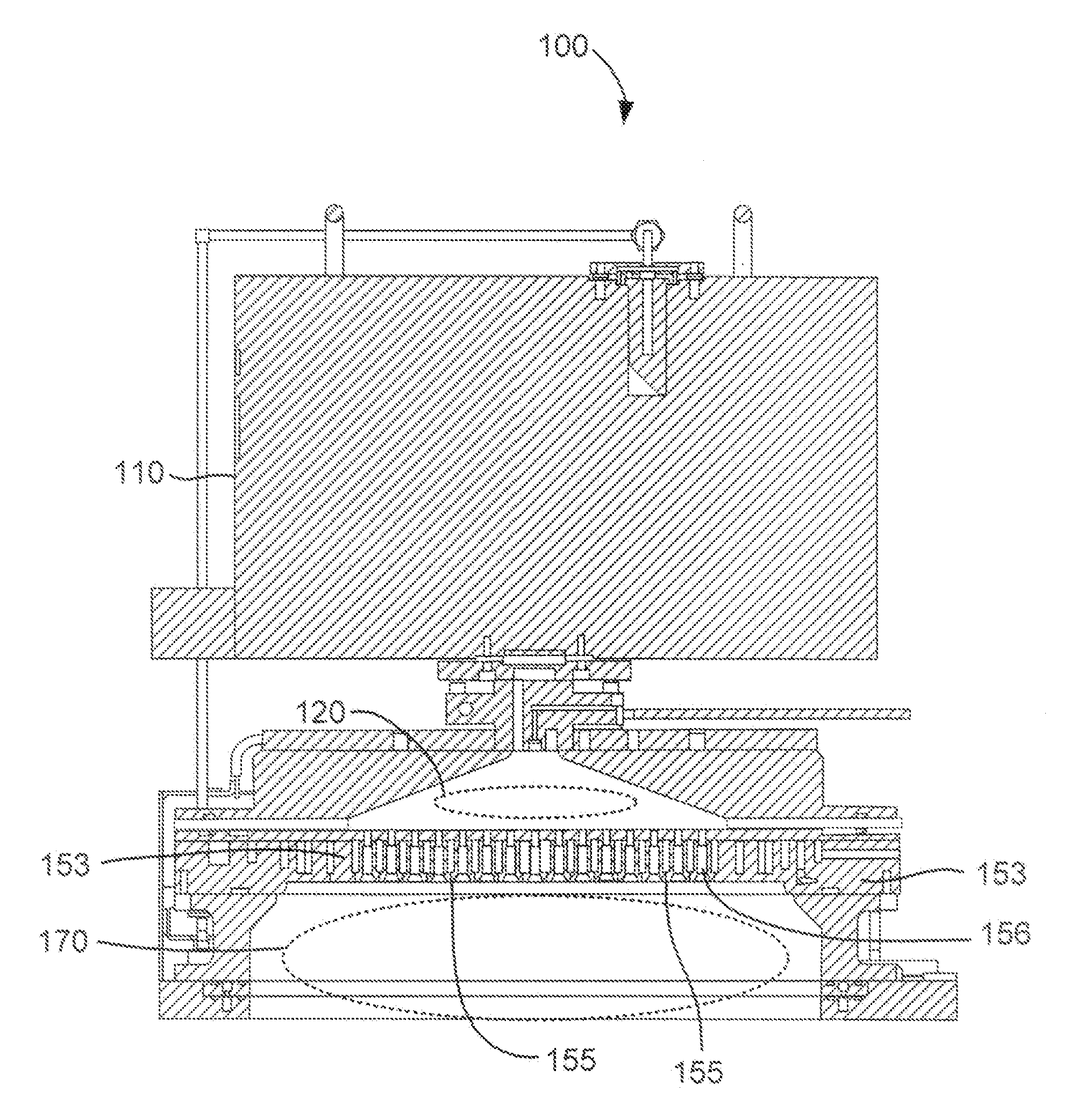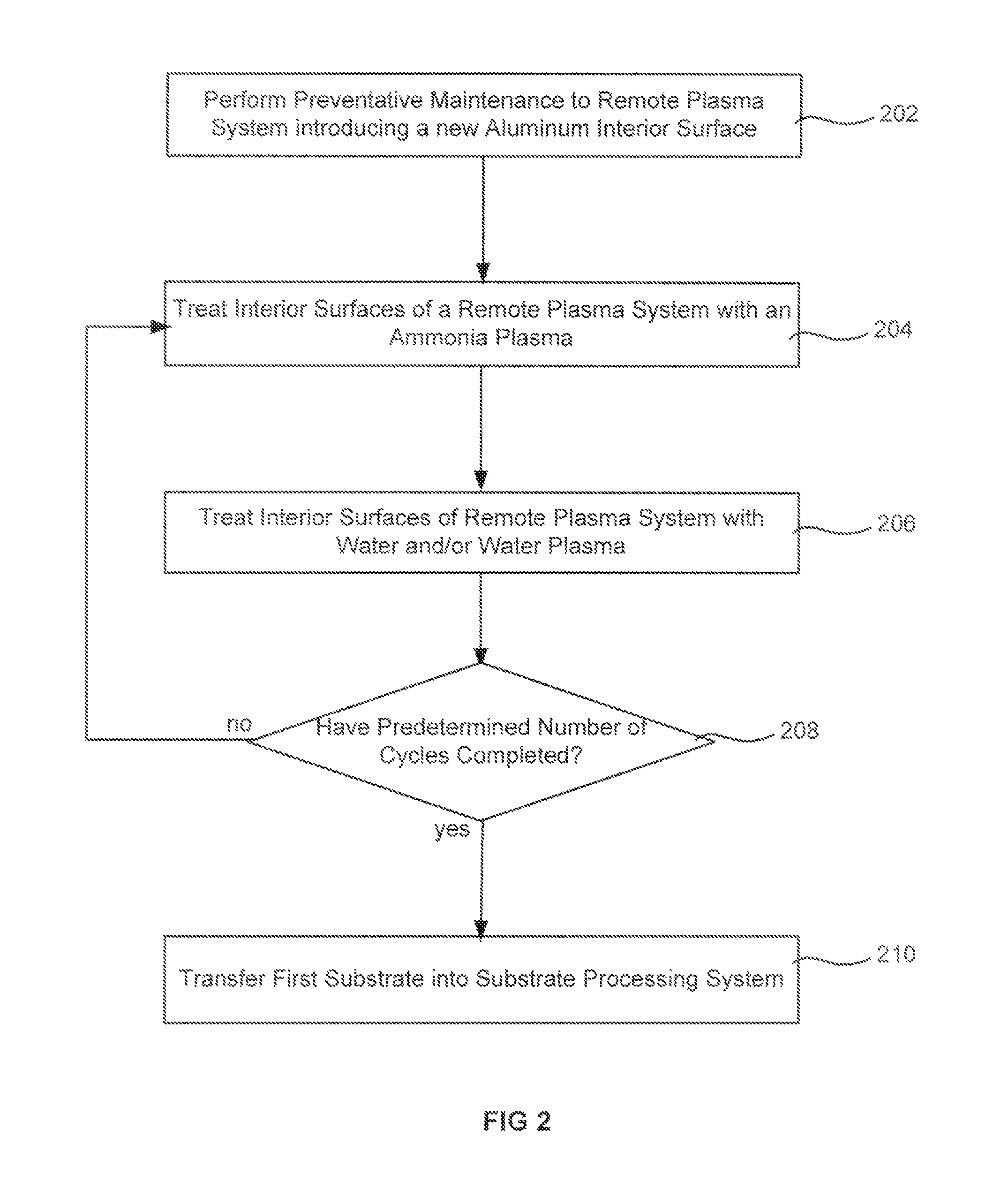Remote plasma burn-in
a plasma burnin and plasma technology, applied in the direction of chemical vapor deposition coating, coating, electric discharge tube, etc., can solve the problems of dielectric material, dielectric material, and the structural features of the device having decreased spatial dimensions,
- Summary
- Abstract
- Description
- Claims
- Application Information
AI Technical Summary
Benefits of technology
Problems solved by technology
Method used
Image
Examples
Embodiment Construction
[0015]Methods of treating the interior of a plasma region are described. The methods include a preventative maintenance procedure or the start-up of a new substrate processing chamber having a remote plasma system. A new interior surface is exposed within the remote plasma system. The (new) interior surfaces are then treated by sequential steps of (1) forming a remote plasma from hydrogen-containing precursor within the remote plasma system and then (2) exposing the interior surfaces to water vapor. Steps (1)-(2) are repeated at least ten times to complete the burn-in process. Following the treatment of the interior surfaces, a substrate may be transferred into a substrate processing chamber. A dielectric film may then be formed on the substrate by flowing one precursor through the remote plasma source and combining the plasma effluents with a second precursor flowing directly to the substrate processing region.
[0016]A brief description of an exemplary substrate processing chamber l...
PUM
| Property | Measurement | Unit |
|---|---|---|
| plasma power | aaaaa | aaaaa |
| plasma power | aaaaa | aaaaa |
| pressure | aaaaa | aaaaa |
Abstract
Description
Claims
Application Information
 Login to View More
Login to View More - R&D
- Intellectual Property
- Life Sciences
- Materials
- Tech Scout
- Unparalleled Data Quality
- Higher Quality Content
- 60% Fewer Hallucinations
Browse by: Latest US Patents, China's latest patents, Technical Efficacy Thesaurus, Application Domain, Technology Topic, Popular Technical Reports.
© 2025 PatSnap. All rights reserved.Legal|Privacy policy|Modern Slavery Act Transparency Statement|Sitemap|About US| Contact US: help@patsnap.com



